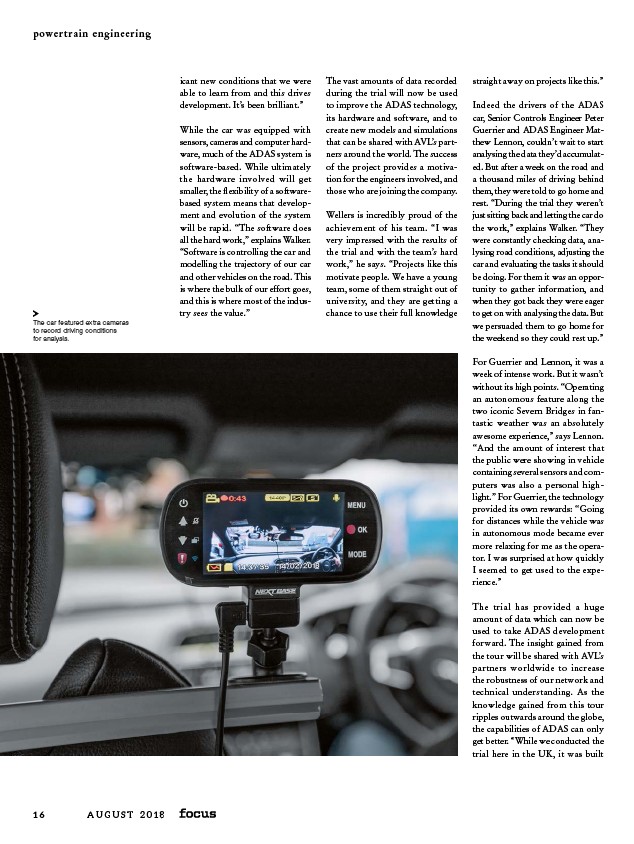
powertrain engineering
1 6 A U G U S T 2 0 1 8
icant new conditions that we were
able to learn from and this drives
development. It’s been brilliant.”
While the car was equipped with
sensors, cameras and computer hardware,
much of the ADAS system is
software-based. While ultimately
the hardware involved will get
smaller, the flexibility of a softwarebased
system means that development
and evolution of the system
will be rapid. “The software does
all the hard work,” explains Walker.
“Software is controlling the car and
modelling the trajectory of our car
and other vehicles on the road. This
is where the bulk of our effort goes,
and this is where most of the industry
sees the value.”
The vast amounts of data recorded
during the trial will now be used
to improve the ADAS technology,
its hardware and software, and to
create new models and simulations
that can be shared with AVL’s partners
around the world. The success
of the project provides a motivation
for the engineers involved, and
those who are joining the company.
Wellers is incredibly proud of the
achievement of his team. “I was
very impressed with the results of
the trial and with the team’s hard
work,” he says. “Projects like this
motivate people. We have a young
team, some of them straight out of
university, and they are getting a
chance to use their full knowledge
straight away on projects like this.”
Indeed the drivers of the ADAS
car, Senior Controls Engineer Peter
Guerrier and ADAS Engineer Matthew
Lennon, couldn’t wait to start
analysing the data they’d accumulated.
But after a week on the road and
a thousand miles of driving behind
them, they were told to go home and
rest. “During the trial they weren’t
just sitting back and letting the car do
the work,” explains Walker. “They
were constantly checking data, analysing
road conditions, adjusting the
car and evaluating the tasks it should
be doing. For them it was an opportunity
to gather information, and
when they got back they were eager
to get on with analysing the data. But
we persuaded them to go home for
the weekend so they could rest up.”
For Guerrier and Lennon, it was a
week of intense work. But it wasn’t
without its high points. “Operating
an autonomous feature along the
two iconic Severn Bridges in fantastic
weather was an absolutely
awesome experience,” says Lennon.
“And the amount of interest that
the public were showing in vehicle
containing several sensors and computers
was also a personal highlight.”
For Guerrier, the technology
provided its own rewards: “Going
for distances while the vehicle was
in autonomous mode became ever
more relaxing for me as the operator.
I was surprised at how quickly
I seemed to get used to the experience.”
The trial has provided a huge
amount of data which can now be
used to take ADAS development
forward. The insight gained from
the tour will be shared with AVL’s
partners worldwide to increase
the robustness of our network and
technical understanding. As the
knowledge gained from this tour
ripples outwards around the globe,
the capabilities of ADAS can only
get better. “While we conducted the
trial here in the UK, it was built
The car featured extra cameras
to record driving conditions
for analysis.